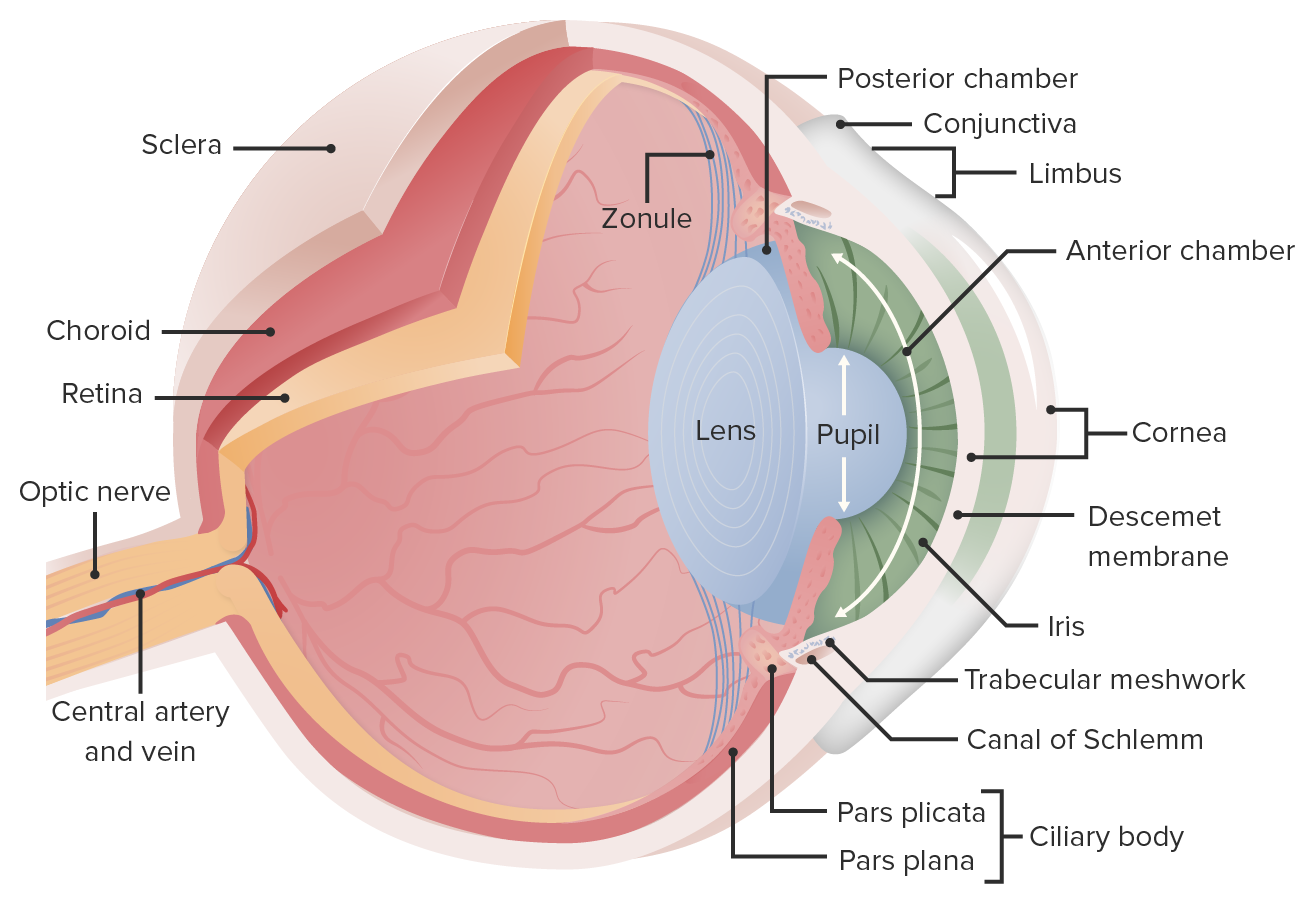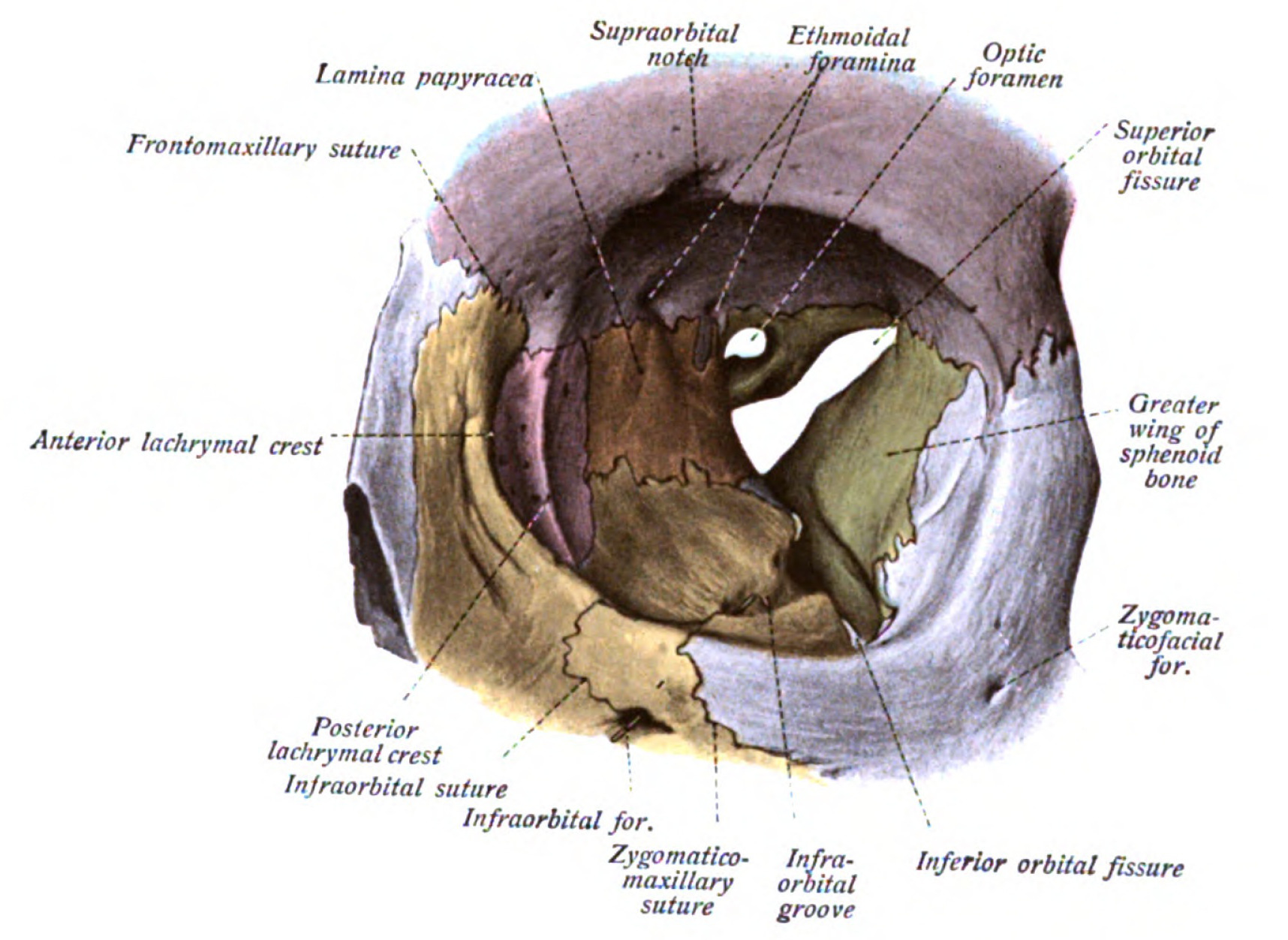Playlist
Show Playlist
Hide Playlist
Iris
-
Slides 16 Human Organ Systems Meyer.pdf
-
Reference List Histology.pdf
-
Download Lecture Overview
00:01 Now let us move back from the cornea and look at the iris. It is the diaphragm that allows certain amounts of light through the pupil and through the lens. It guards us against excessive illumination and opens up and allows more light to come through the lens or through the pupil when we are in the dim light. So it needs to be a structure that can contract and open or dilate, contract or constrict. If you look at the right-hand side, you can see on the most posterior aspect, there is this heavily pigmented layer. In fact, there's two layers of cells there. They are part of the extension or the continuation of the non-neuro part of the retina. Double layer pigmented cells on the right-hand side, the anterior border is a rather rough border that can be seen with the ophthalmoscope when examining the eye. Now within the stroma of the iris, there are also melanocytes and when light passes through and reflects from that posterior pigmented layer if there's not to be too melanocytes in that stroma, the iris has a bluish colour. 01:30 But as more melanocytes are present in that stroma in various individuals, the colour of the iris changes from a greyish blue to a green to finally a brown as more and more melanocytes are embedded in that stroma. The iris sits on the lens and as I said it changes it dimensions to allow more or less light going through the lens depending on the level of illumination. And the lens and the iris are associated with the ciliary body, which I will describe in a moment. 02:07 When you look at the iris in high magnification, as we will do in a moment, this is just to remind you where the iris is, we can see that the iris has within it two different sorts of muscles shown on this particular diagram. 02:31 In that diagram, you can see the very tip of the iris. On the right-hand side there's a little opening with the lenses that is the pupil and I bring your attention to two muscle layers. Well they are really a myoepithelial layer and a smooth muscle layer. The dilator pupillae consists of myoepithelial cells and they run like the spokes of a wheel. They run rightly out from the inner part or the edge of the iris to the external part as I said, they are like the spokes of the wheel. And if they contract, then the pupil is going to dilate. 03:09 If the spokes of your wheels contract, then they open up a space where the hub of the wheel is. Conversely, at the very tip, there is a sphincter pupillae, and that runs in a circular pattern around the iris. If that contracts, then it restricts or reduces the diameter of the pupil and, therefore, restricts the amount of light going through. And as you can see explained here, they are innervated by two separate components of the autonomic nervous system.
About the Lecture
The lecture Iris by Geoffrey Meyer, PhD is from the course Sensory Histology.
Included Quiz Questions
Which of the following is NOT a function of the iris?
- Protection against dust
- Dilation in dim light
- Constriction in excess light
- Accommodation reflex
- Preventing blurring due to divergent light rays
Which of the following colors of the iris is a result of the absence of melanin in the front layer of the iris?
- Blue
- Gray
- light brown
- Green
- Dark brown
Customer reviews
2,0 of 5 stars
| 5 Stars |
|
0 |
| 4 Stars |
|
0 |
| 3 Stars |
|
0 |
| 2 Stars |
|
1 |
| 1 Star |
|
0 |
This is what you read on Lecturio's site: "In order to take on this challenge, Lecturio created a high-quality digital medical education resource, which is affordable, adaptive, and personalized. We designed our platform with the needs of learners and faculty in mind, combined with the latest state-of-the-art learning technology and comprehensive monitoring and assessment features." STATE OF THE ART??? These are PowerPoint slides!!! The guy is talking about different structures and you have to pause the video to find what he is trying to reference! Get a pointer. Use an arrow. Show the viewer the exact location you want to emphasize. If I turned this type of presentation in for a grade, I would get it returned. Kahn Academy, Ken Hub...this is as low tech as you can get. I expected so much more. You are supposed to save us time. I hate writing this but other people have to know that this lecturer's delivery - I might as well get a text book out and read it to myself.





